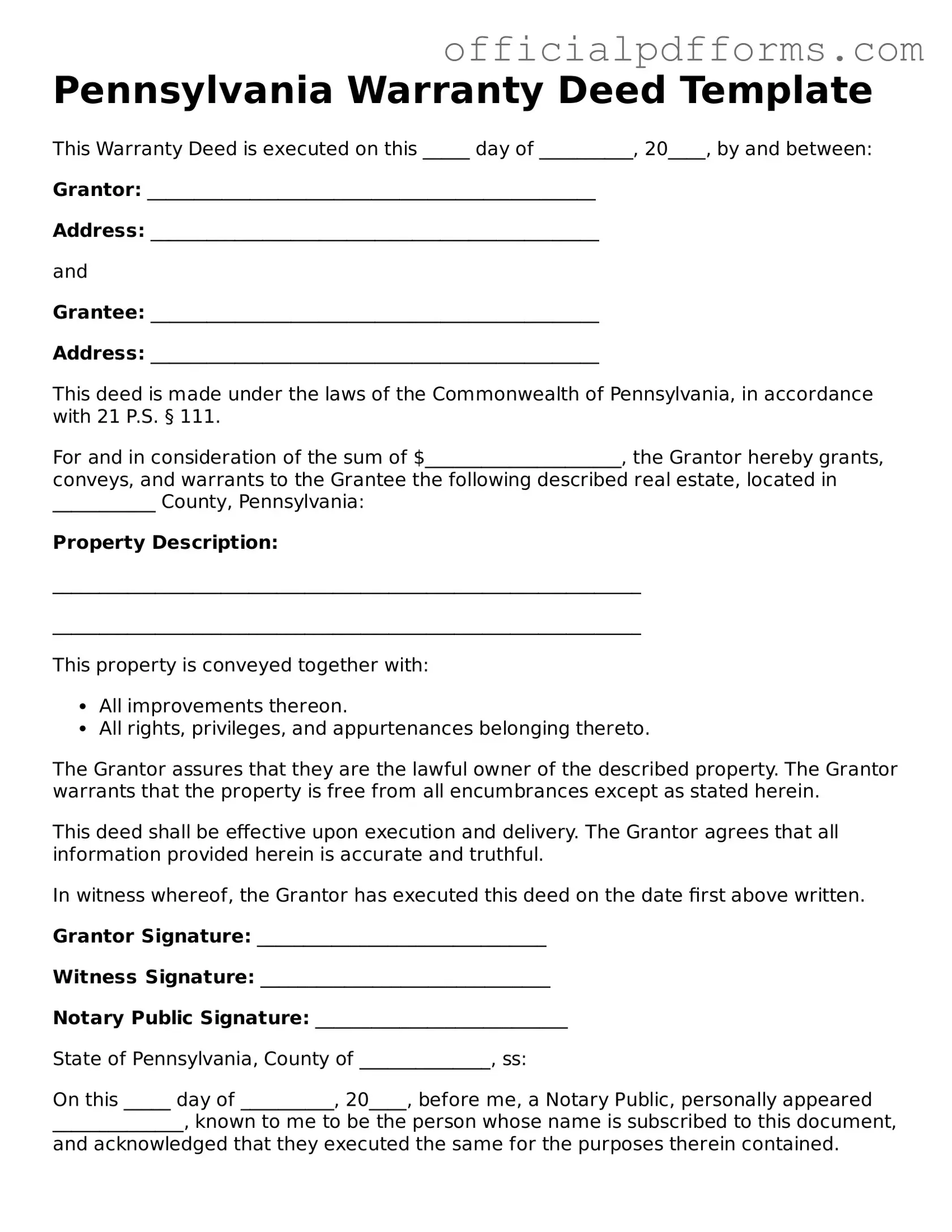A Pennsylvania Deed form is a legal document used to transfer ownership of real estate in Pennsylvania. It outlines the details of the property being transferred, including its legal description, the names of the parties involved, and any relevant terms of the transfer. The deed must be signed and notarized to be valid.
What types of deeds are available in Pennsylvania?
In Pennsylvania, several types of deeds can be used, including:
-
Warranty Deed:
Guarantees that the grantor has clear title to the property and has the right to sell it.
-
Quitclaim Deed:
Transfers any interest the grantor may have in the property without any guarantees.
-
Special Warranty Deed:
Offers limited warranties, only covering the time the grantor owned the property.
To fill out a Pennsylvania Deed form, follow these steps:
-
Provide the names and addresses of the grantor (seller) and grantee (buyer).
-
Include the legal description of the property. This can usually be found on the current deed or tax records.
-
State the consideration, or the amount paid for the property.
-
Sign the deed in front of a notary public.
Ensure that all information is accurate to avoid issues during the transfer process.
Do I need to have the deed notarized?
Yes, a Pennsylvania Deed must be notarized to be legally valid. The grantor must sign the deed in the presence of a notary public, who will then affix their seal. This step is crucial as it helps prevent fraud and ensures the authenticity of the document.
The completed Pennsylvania Deed form should be filed with the Recorder of Deeds in the county where the property is located. Filing the deed ensures that the transfer of ownership is officially recorded and becomes part of the public record. There may be a filing fee, so it is advisable to check with the local office for specific requirements.
What happens after I file the deed?
Once the deed is filed, it becomes a public record. The new ownership is officially recognized, and the grantee will receive a copy of the recorded deed. It is important for the grantee to keep this document safe, as it serves as proof of ownership. Additionally, the local tax authority may update their records to reflect the new owner, which can affect property tax assessments.
